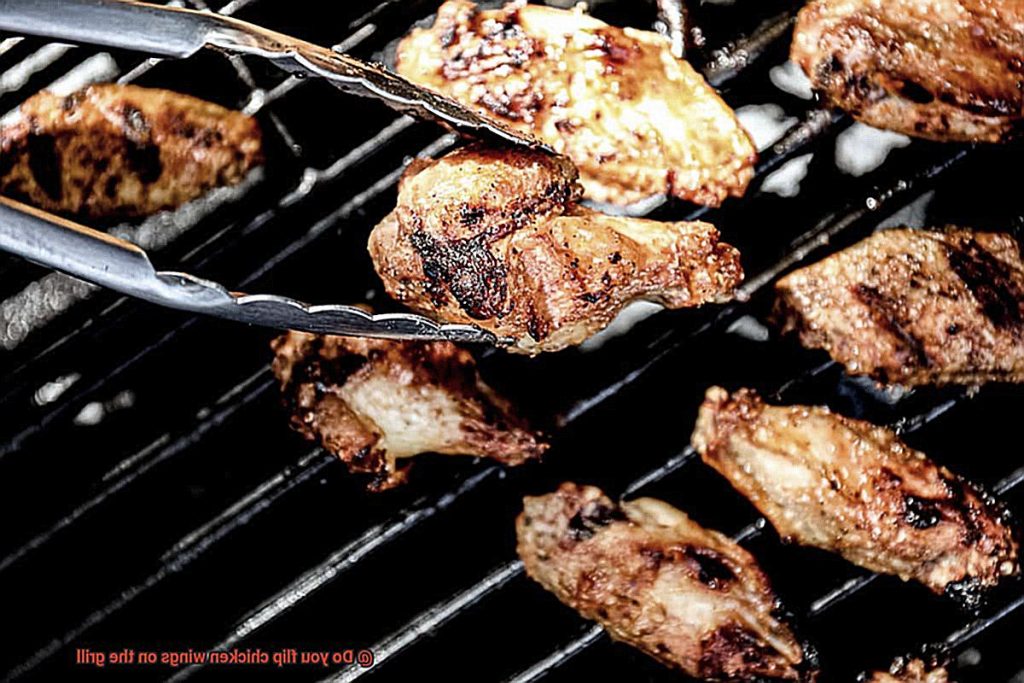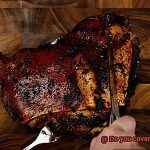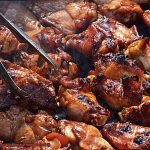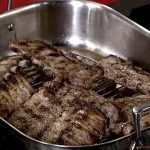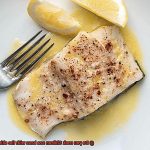Welcome to the world of grilling chicken wings. We all crave that irresistible combination of crispy skin and juicy meat. But here’s the burning question: do you flip chicken wings on the grill? Well, today we’re going to uncover the truth behind the perfect flip.
Grilling wings is an art that requires just the right amount of heat and timing. And yes, flipping them is crucial for that mouthwatering texture and flavor. By flipping those bad boys, you ensure an even cook on both sides, resulting in a caramelized exterior that’ll make your taste buds sing.
But when should you flip? Once or multiple times? And what about those saucy marinades? Don’t sweat it – we’ve got your back. In this post, we’ll spill some pro tips and techniques to help you master the art of flipping wings on the grill.
Whether you’re a seasoned grill master or a newbie in the kitchen, these tips will guarantee perfectly grilled chicken wings every time. So grab your tongs, fire up that grill, and let’s get flipping.
Contents
Factors to Consider When Grilling Chicken Wings
Grilling chicken wings is an art that requires attention to detail and careful consideration of various factors. From temperature control to marinating techniques, each step plays a crucial role in producing delicious and succulent wings. In this blog post, we will explore the key factors to consider when grilling chicken wings and provide tips to help you become a grill master.
First and foremost, temperature control sets the foundation for a successful grilling experience. Preheating your grill to medium-high heat ensures that the wings cook evenly without burning. This temperature balance is key to achieving the perfect balance between a crispy exterior and a juicy interior.
Next, marinating or seasoning the chicken wings before grilling is essential for enhancing their flavor. Whether you opt for a simple marinade of oil, salt, and pepper or a more complex blend of herbs and spices, allowing the wings to marinate for at least 30 minutes infuses them with mouthwatering flavors. Just be sure to remove excess marinade before placing the wings on the grill to prevent flare-ups.
Choosing between direct and indirect heat depends on your desired outcome. Direct heat is perfect for achieving a crispy skin, while indirect heat ensures slower and more even cooking. Start with direct heat to sear the wings and create beautiful grill marks, then move them to indirect heat to finish cooking without burning.
Timing is crucial when it comes to grilling chicken wings. Overcooking can result in dry and tough wings, while undercooking poses health risks. Grill the wings for about 20-25 minutes, flipping them halfway through the process. Use a meat thermometer to ensure they reach an internal temperature of 165°F (74°C) for safe consumption.
And speaking of flipping, yes, you should flip chicken wings on the grill. Flipping ensures even cooking on both sides and prevents sticking. It also promotes better browning and caramelization, resulting in a visually appealing final product. Remember to flip the wings once during the grilling process, usually around the halfway mark.
Benefits of Flipping Chicken Wings on the Grill
Grilling chicken wings is an intricate dance of flavors, and every grill master knows that the secret to achieving culinary perfection lies in the art of flipping. In this post, we will explore the numerous benefits of flipping chicken wings on the grill, unveiling how this technique ensures even cooking, creates a tantalizingly crispy exterior, reduces fat content, guarantees uniform doneness, and enhances the overall flavor profile. So, grab your tongs and prepare to elevate your grilling game to new heights.
Even Cooking:
Flipping chicken wings on the grill is akin to giving each wing its moment in the spotlight. This technique guarantees that both sides of the wings receive equal exposure to the heat, preventing one side from being overcooked while the other remains underdone. It’s a symphony of flavors unfolding in perfect harmony.
Crispy Exterior:
Picture this: beautiful grill marks forming on the wings’ surface, a tantalizing charred aroma wafting through the air. By flipping the wings on the grill, you ensure that both sides develop those coveted grill marks and acquire a mouthwateringly crispy texture. Prepare for a visual feast that will make your guests eagerly reach for seconds.
Reduced Fat Content:
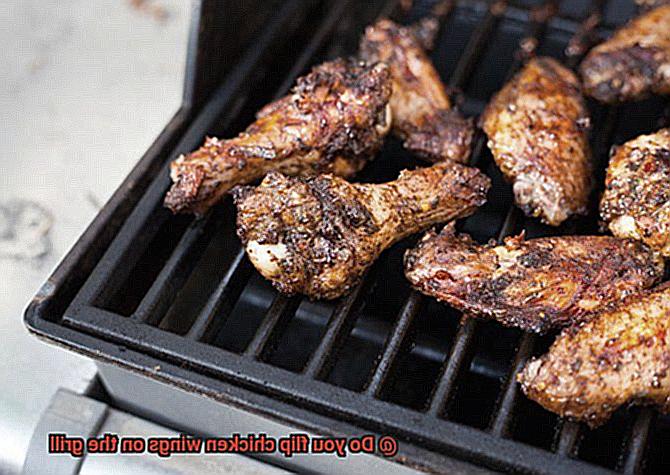
Chicken wings can be indulgently rich, but flipping them during grilling allows excess fat to gracefully drip away. This not only results in a healthier dish but also helps prevent flare-ups and reduces the risk of charring or burning due to excessive fat dripping onto the flames. It’s a virtuous balance between decadence and health.
Uniform Doneness:
Flipping chicken wings on the grill ensures that they cook through evenly. By carefully turning them over, you can monitor their progress and guarantee that each wing reaches an internal temperature of 165°F (74°C) – the golden standard of safety and succulence. Bid farewell to undercooked or overcooked wings, and embrace a culinary triumph.
Enhanced Flavor:
Flipping chicken wings on the grill is like conducting an orchestra of taste. Whether you’re using a marinade or a tantalizing barbecue sauce, this technique allows for better basting and sauce distribution. Each flip ensures that both sides of the wings are thoroughly coated and infused with a symphony of flavors. Brace yourself for an explosion of deliciousness with every bite.
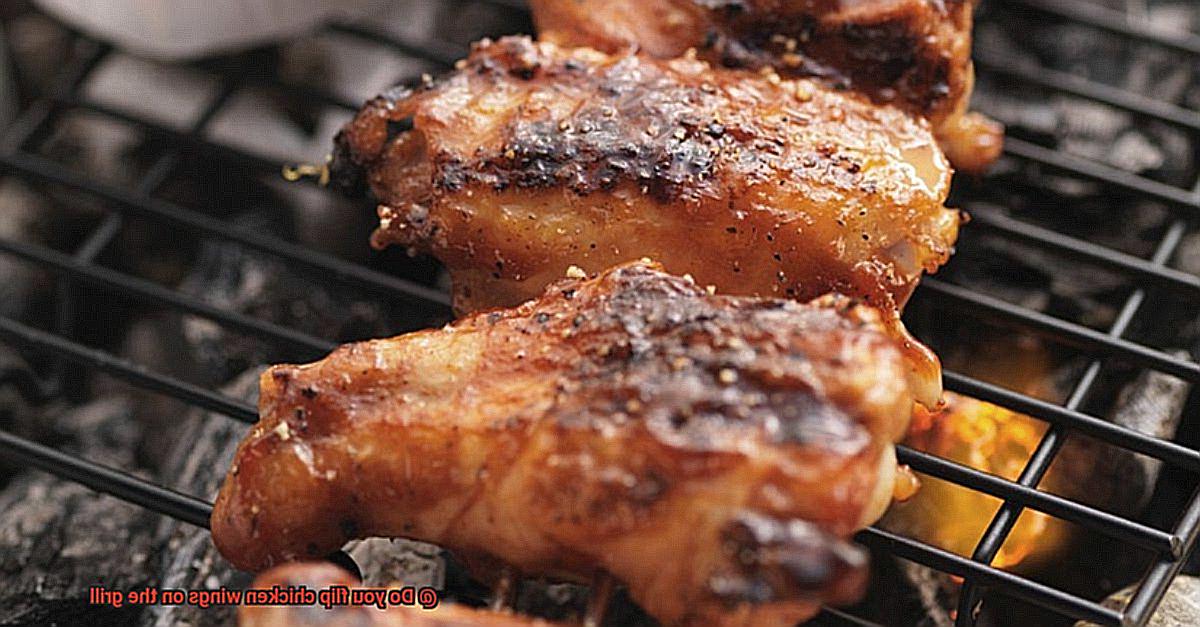
Disadvantages of Not Flipping Chicken Wings on the Grill
Well, if you’re not flipping those wings, you may be sacrificing some serious flavor and texture. Let’s delve into the disadvantages of not flipping chicken wings on the grill and why it’s a technique worth mastering.
First and foremost, uneven cooking is a major pitfall. When you neglect to flip those wings, one side receives all the love from the direct heat, while the other side remains undercooked. Nobody wants to bite into a charred wing on one side and a raw one on the other. Flipping ensures that both sides cook evenly, resulting in a perfect balance of crispy skin and juicy meat.
Speaking of juicy meat, not flipping those wings increases the risk of dryness. By continuously cooking one side without flipping, the juices within the meat don’t get a chance to evenly distribute. This can lead to dry and tough wings that are far from enjoyable.
And let’s not forget about flavor. When you flip those wings, both sides come into contact with the grill grates, creating those beautiful grill marks and enhancing the flavor profile. Not flipping them means missing out on that extra layer of smoky goodness.
Craving crispy skin? Well, flipping is key. By only cooking one side, you’re missing out on achieving that desired crispy texture all around. Nobody wants a soft and unappetizing wing skin.
Lastly, not flipping those wings can prolong your cooking time. Since only one side is being cooked at a time, it takes longer to achieve that perfect level of doneness throughout the wings. And let’s face it, nobody wants to keep their guests waiting or delay their own meal enjoyment.
Recommended Technique for Grilling Chicken Wings
Grilling chicken wings to perfection requires a recommended technique that guarantees crispy skin, juicy meat, and an overall delightful eating experience. The key to achieving this is simple – flip them. Flipping the wings while they cook on the grill ensures even cooking on both sides, resulting in a consistent texture and flavor throughout each wing. Not only does this technique prevent dryness, but it also creates that desirable crispy, charred exterior that we all love.
To begin, preheat your grill to medium-high heat. This ensures that the chicken wings cook through without burning on the outside. While the grill is heating up, take a moment to oil your grill grates to prevent sticking. Now you’re ready to get grilling.
Place the chicken wings on the grill, leaving space between each wing to allow for even cooking and prevent them from sticking together. Close the lid and let them cook for about 8-10 minutes. During this time, you may notice flare-ups from dripping fat. Be prepared with a spray bottle of water nearby to extinguish any flames if necessary.
After the initial cooking time, it’s time to flip those wings. Using tongs, carefully turn each wing over to ensure both sides get cooked evenly. Close the lid again and let them cook for another 8-10 minutes on the other side. Keep an eye on them to prevent burning or charring.
How do you know when the wings are done? The internal temperature should reach 165°F (74°C), ensuring fully cooked and safe-to-eat meat. The skin should be crispy and slightly charred, while the meat inside should be juicy and flavorful.
It’s important to note that flipping the wings is not mandatory but highly recommended. By taking this extra step, you guarantee that each wing is cooked evenly, resulting in a more enjoyable eating experience for you and your guests.
How to Monitor Heat Intensity and Adjust Accordingly
Grilling chicken wings is a delicious and popular choice for outdoor cooking. To ensure your wings turn out perfectly juicy and flavorful, it’s important to monitor the heat intensity and make adjustments as needed throughout the grilling process. In this blog post, we’ll explore some expert tips and techniques to help you become a grill master when it comes to cooking chicken wings.
Understanding Your Grill:
The type of grill you use plays a crucial role in monitoring and adjusting heat intensity. Whether it’s a charcoal grill, gas grill, or electric grill, familiarize yourself with its temperature control mechanisms. For a charcoal grill, regulate airflow by adjusting the vents. Gas grills offer precise temperature control through burners, while electric grills have adjustable thermostats.
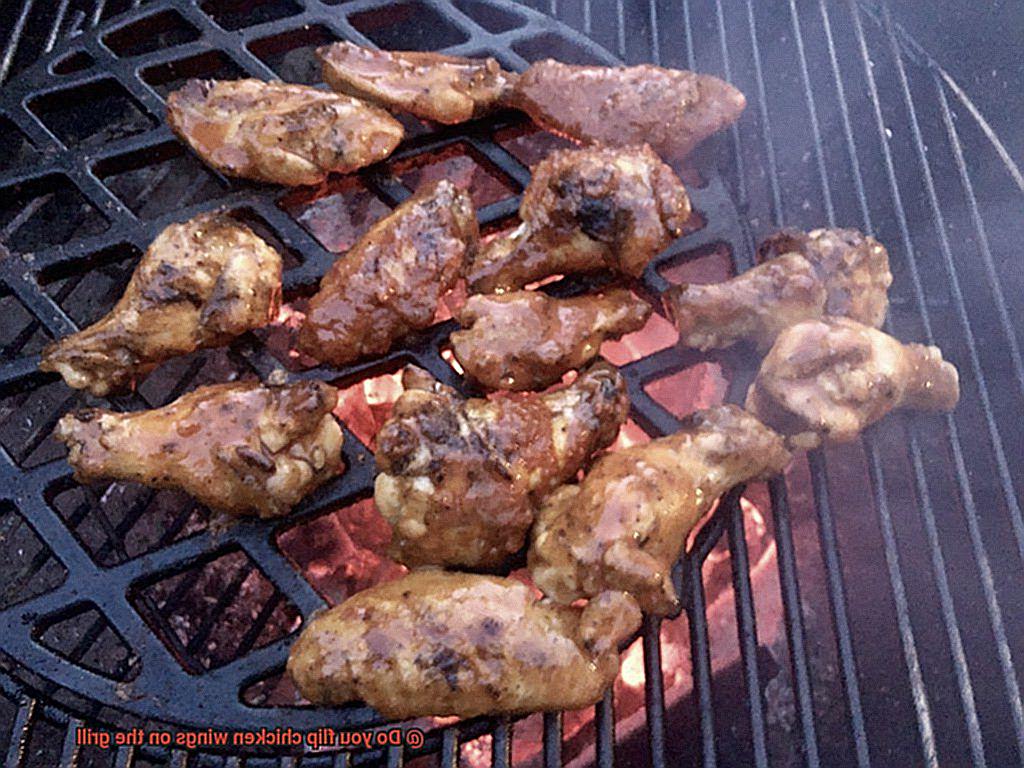
To monitor heat intensity on a charcoal grill, start by organizing the charcoal into two zones – one with more coals for higher heat and one with fewer coals for lower heat. Adjust the vents to control the oxygen flow and subsequently the heat intensity. Opening the vents wide will increase the temperature, while partially closing them will reduce the heat. By finding the right balance between airflow and charcoal distribution, you can maintain consistent heat throughout the grilling process.
Gas grills provide more precise temperature control through their burners. By turning on one burner and leaving others off, you can create a direct heat zone for searing the wings and an indirect heat zone for gentle cooking. Adjust the burner knobs to increase or decrease heat intensity as needed.
Electric grills often have adjustable thermostats that allow you to set a specific temperature. This feature makes it relatively easy to monitor and maintain consistent heat intensity while grilling chicken wings. However, it’s still crucial to keep an eye on the grill to ensure that the desired temperature is being maintained.
The Power of a Reliable Thermometer:
Invest in a good meat thermometer to monitor the internal temperature of your chicken wings. Different parts of the wings require specific temperatures for doneness. Regularly check the temperature to adjust the heat intensity accordingly and avoid undercooking or overcooking.
To use a meat thermometer, insert the probe into the thickest part of the wing without touching the bone. Wait for a few seconds until the temperature reading stabilizes. For safe consumption, chicken wings should reach an internal temperature of 165°F (74°C) for drumettes and 160°F (71°C) for flats. Adjust the heat intensity based on these temperature readings, increasing or decreasing as necessary.
Mastering the Two-Zone Fire Setup:
Create two heat zones on your grill – one for searing and one for gentle cooking. On one side, use high heat to achieve that perfect charred exterior, while on the other side, maintain low heat to cook the wings through without burning them.
Tips for Perfectly Grilled Chicken Wings Every Time
Grilling chicken wings is an art that requires skill and finesse. To achieve that perfect balance of juicy, flavorful meat with a crispy, charred exterior, you need to master the art of flipping. In this guide, we will explore the importance of flipping your chicken wings on the grill and share tips for achieving maximum flavor every time. Get ready to elevate your grilling game and impress your friends and family with perfectly grilled chicken wings.
Flipping for Even Cooking:
The key to perfectly grilled chicken wings is ensuring even cooking on both sides. Flipping your wings on the grill allows each side to receive direct heat, resulting in perfectly cooked meat throughout. No more biting into a wing with one side raw and the other side overcooked – flipping guarantees a consistent, juicy texture from edge to edge.
Crispy Goodness:
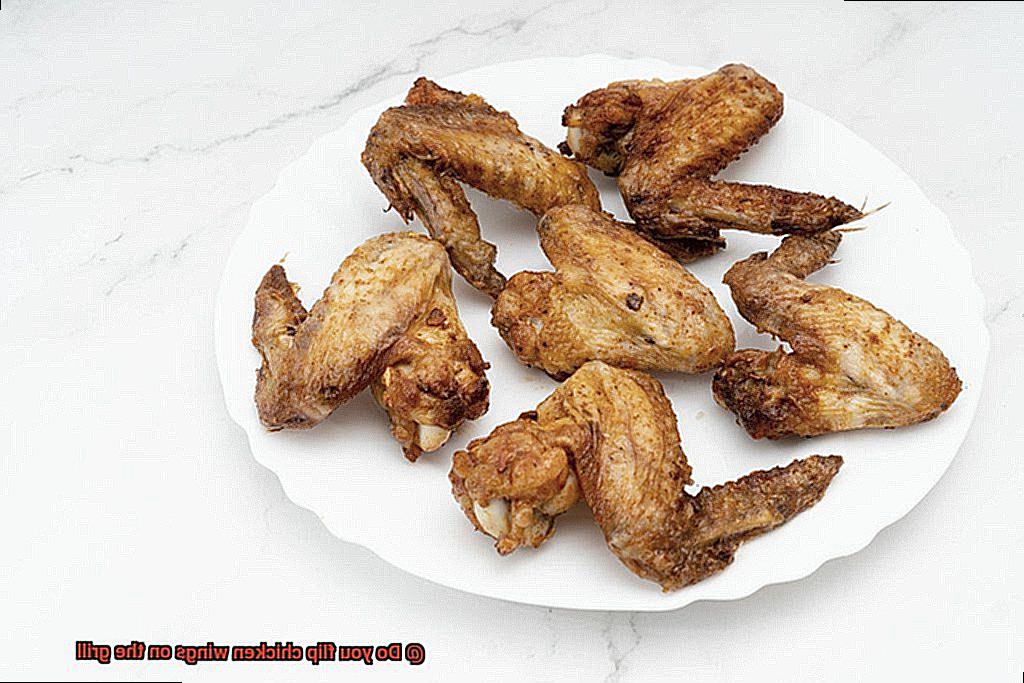
Flipping isn’t just about even cooking; it’s also about achieving that mouthwatering crispy exterior we all crave. Each flip exposes a new side of the wing to the intense heat of the grill, creating beautiful grill marks and caramelization. The result? Wings that are perfectly browned, crispy, and bursting with flavor.
Bye-Bye Burnt Wings:
We’ve all experienced the disappointment of burnt chicken wings. Flipping your wings during grilling helps prevent excessive charring on one side. By constantly turning them, you can ensure that each side cooks evenly without becoming charred or burnt. Say goodbye to unpleasant charcoal-like flavors and hello to perfectly grilled wings every time.
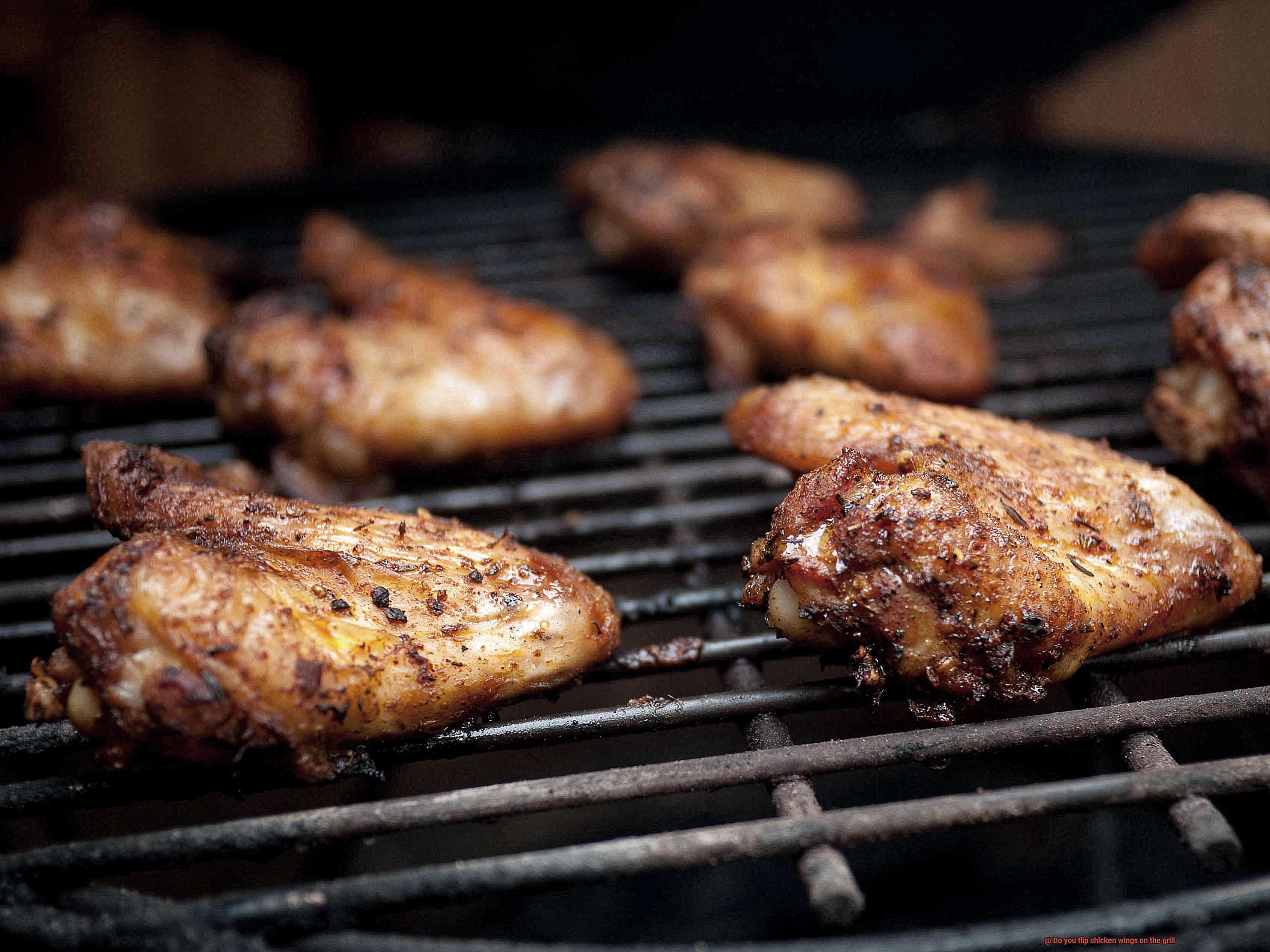
Flavor Infusion:
Flipping isn’t just about cooking; it’s also about enhancing flavor. As each side of the wing grills, it absorbs the smoky flavors from the grill, infusing them into every bite. The result is a tantalizing combination of juicy meat and mouthwatering smoky flavors that will have your taste buds dancing with delight.
The Golden Rule:
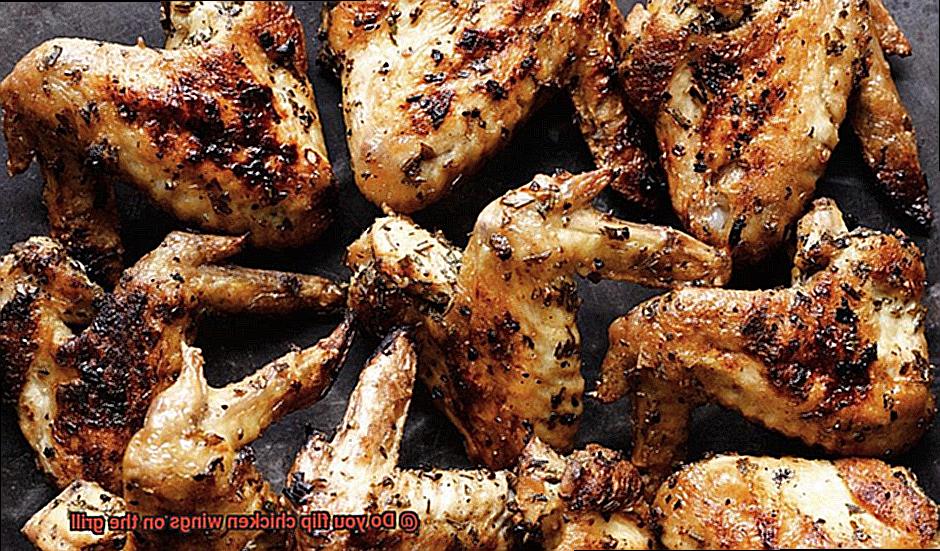
Mastering the art of flipping requires patience and timing. Don’t rush the process. Allow one side of the wing to cook until it develops those beautiful grill marks and starts to brown before flipping. This way, you’ll achieve that golden, crispy exterior we all love while ensuring that the meat is cooked through.
Common Mistakes to Avoid When Grilling Chicken Wings
Grilling chicken wings is an art that requires precision and attention to detail. While it may seem straightforward, there are common mistakes that can easily ruin your wings. In this article, we will explore the most common mistakes to avoid when grilling chicken wings, ensuring a mouthwatering and unforgettable culinary experience.
Neglecting Proper Preparation:
To achieve the best results, it’s crucial to start with proper preparation. Clean the wings under cold water to remove any impurities, pat them dry with paper towels to ensure even cooking, and remove excess moisture. This foundational step sets the stage for a delicious outcome.
Grilling Over High Heat for Too Long:
High heat may offer a quick sear, but it often leads to burnt exteriors and undercooked interiors. Instead, opt for indirect heat and cook the wings slowly. This method allows the flavors to develop, creating a perfect balance of crispy skin and juicy meat without any unpleasant charred flavors.
Inadequate Marinating or Seasoning:
Don’t skimp on marinating or seasoning your chicken wings. By marinating them overnight or for a few hours before grilling, you infuse them with incredible flavors and tenderize the meat. Experiment with different marinades or dry rubs to elevate the taste to new heights and surprise your taste buds.
Overcrowding the Grill:
Give your wings some personal space on the grill. Overcrowding inhibits proper airflow and results in uneven cooking. Leave enough space between each wing to allow for even heat distribution and that sought-after crispy exterior. This way, every bite will be evenly cooked and bursting with flavor.
Constant Flipping and Moving:
Resist the temptation to constantly flip and move your wings around on the grill. Frequent flipping can cause moisture loss, resulting in dry meat. Instead, let them cook undisturbed for a few minutes on each side before flipping once or twice to achieve even browning. This technique ensures juicy and succulent wings with a caramelized crust.
Neglecting the Resting Period:
The final mistake to avoid is not allowing the grilled chicken wings to rest before serving. Resting allows the juices to redistribute throughout the meat, resulting in enhanced flavor and moistness. Give your wings 5-10 minutes to rest, and you’ll be rewarded with an incredible dining experience that will leave your guests craving for more.
Conclusion
When it comes to grilling chicken wings, the age-old question arises: do you flip them or not? Well, let me tell you, my friend, flipping those wings is not just a matter of preference. It’s a culinary art that can make all the difference in the world.
Picture this: you’re standing by the grill, flames dancing and sizzling beneath your perfectly marinated chicken wings. The tantalizing aroma fills the air as your mouth starts to water in anticipation. Now, imagine leaving those wings untouched, never giving them the chance to show off their full potential.
By flipping those wings, you’re ensuring an even distribution of heat and achieving that coveted crispy exterior on both sides. It’s like a symphony of flavors and textures coming together in perfect harmony. The first flip allows for the initial sear and locks in all those delicious juices. Then, with each subsequent flip, you’re building layer upon layer of charred goodness.
But here’s where things get interesting – it’s not just about the taste. Flipping those wings also gives you control over their doneness. You see, chicken wings are delicate creatures that need just the right amount of time on each side to reach that succulent perfection. By flipping them regularly, you can avoid any burnt mishaps or undercooked disasters.
So, next time you fire up that grill and lay those wings down, remember this: flipping is not just a suggestion; it’s a necessity. Embrace the artistry of grilling and let those wings shine from every angle. Trust me, your taste buds will thank you for it.
In conclusion, yes, my friend, do flip those chicken wings on the grill. Elevate your grilling game and unlock a world of flavor possibilities.

